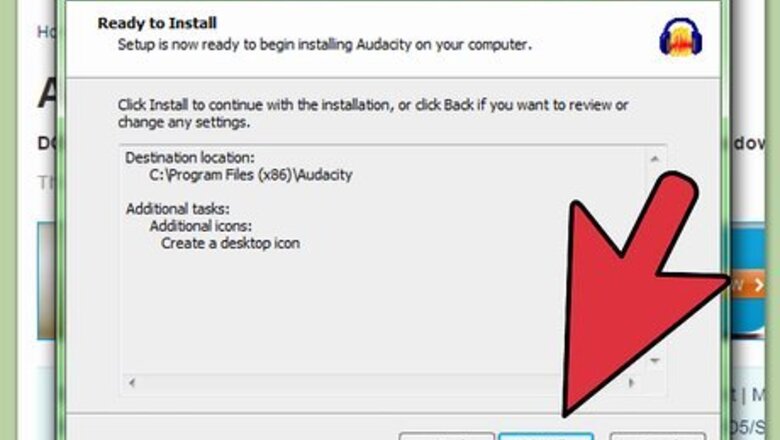
views
Using a Computer
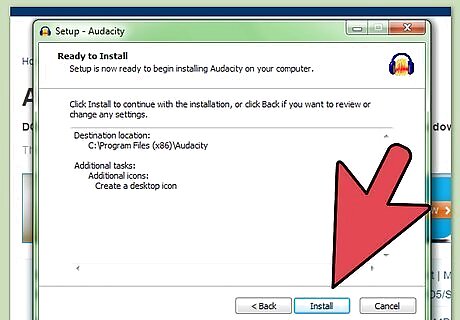
Download and install an audio editing program. Believe it or not, there are a wide variety of free programs available online that are designed to let you easily manipulate audio files. Almost all of these will have some sort of "reverse" feature. A search engine query for "audio editing" or something similar should give several good results. You can also try browsing this list of free quality audio-editing software. For example purposes, we'll be using a program called Audacity that is free, easy to use, and works on Windows, Mac, and Linux. You can download Audacity here. Other free audio-editing programs should work similarly.
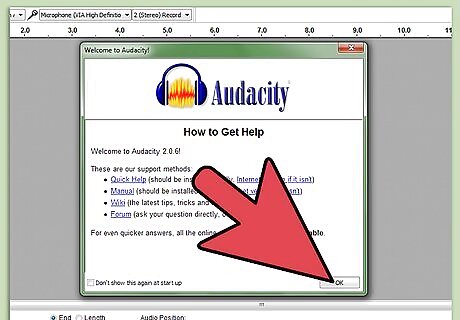
Open Audacity. The first time you open the program, you'll see a window directing you to various help resources. Click "OK" to continue.
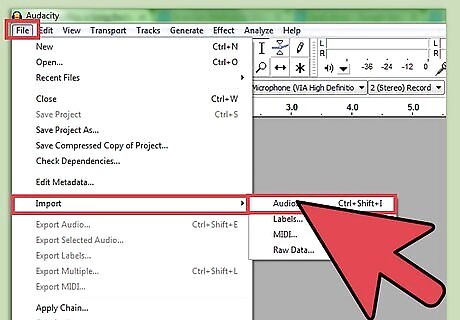
Select File > Import > Audio. Use these menu bar options (located at the top of the window) to open the audio file import menu. You can also hit Ctrl+Shift+I as a shortcut.
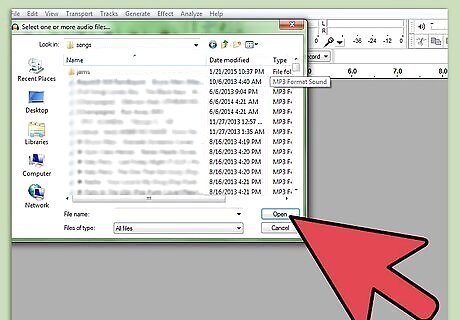
Choose the audio file of the song you want to reverse. A window should pop up that allows you to browse your computer's files. Pick the file of the song you want to reverse, then select "Open." The song's waveform should appear in the Audacity window. Audacity supports many file formats, including .wav, .mp3, .ogg, and AIFF. If you have an audio file that isn't supported, consider converting it.
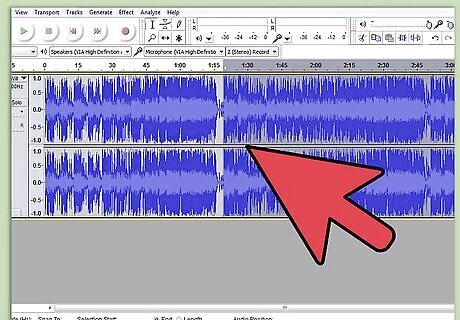
Highlight the portion you want to reverse. Once the track has loaded into Audacity, you can select any portion of it by clicking on the wave form, holding down the mouse button, and dragging to another spot. Do this so that the portion you want to edit is selected. For reference, the left side of the waveform is the beginning of the song and the right side is the end. To make a very precise selection, it can be helpful to zoom in on the waveform.To do this, use your middle mouse button or left-click on the narrow scale bar at the left end of the waveform (which shows 1.0 to -1.0 by default.) Right click to zoom out. If you want to reverse the entire song, click Edit > Select > All or simply hit Ctrl+A to select the entire waveform.
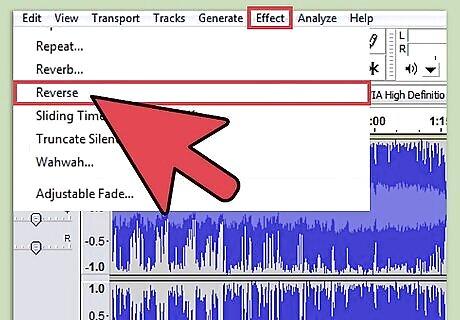
Click Effects > Reverse. Audacity will automatically convert the waveform of the song so that it is reversed and can be listened to backwards. Only the highlighted portion will be reversed — again, if you want to reverse the whole song, you need to select the entire waveform.
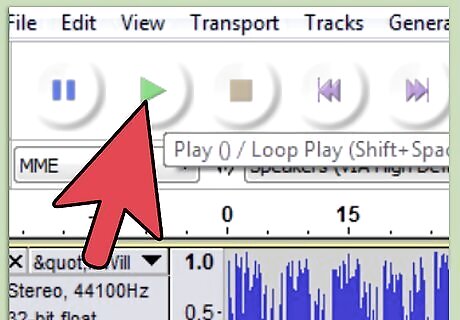
Play the song. Simply click the "Play" button at the top of the window (which looks like a green triangle) in order to hear the portion that you've just reversed. Note that, by default, only the highlighted portion of a song will play when you hit the play button in Audacity. If none of the song is highlighted, the song will play from the beginning.
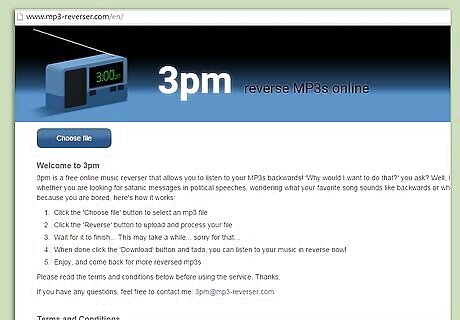
Visit mp3-reverser.com. Don't want to download and install any third-party programs on your computer? Use this easy online method instead — all you'll need is a good internet connection and an audio file in the MP3 format. Start by going to mp3-reverser.com. While mp3-reverser.com is quick and easy to use, there are other online programs that can reverse songs for you as well. You can find these with a simple search engine query like "reverse a song" or "reverse an mp3." MP3 is a very common audio codec — most songs that you download will already be in this format. If the song you want to reverse isn't an MP3, try an online format converter like online-convert.com.
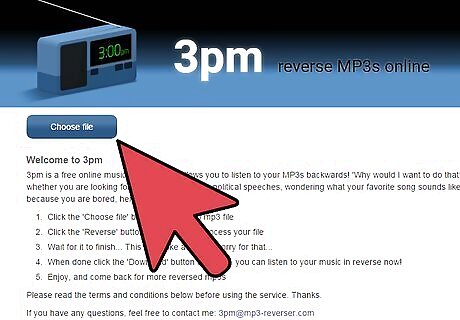
Select "Choose File." This option is in the top left of the page. When you do this, a window will pop up that allows you to browse through your computer's files and find the file you want to reverse. Do this and click "Open."

Select "Reverse!" Your file will automatically begin to convert. You can watch the progress bar at the top of the screen to monitor your file's progress. Note that, depending on the size of your file and the quality of your internet connection, this process can take several minutes.
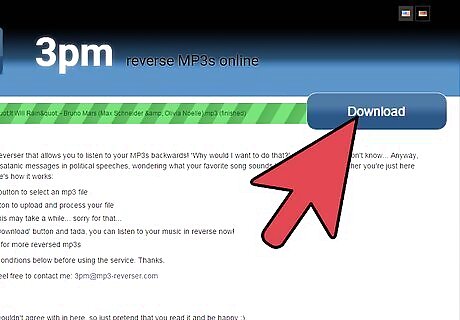
Select "Download" and listen to your file. When your reversed file has finished downloading, you should be able to play it in your media player of choice (e.g., Windows Media Player, iTunes, etc.) Enjoy! If your file doesn't convert successfully, an error message will appear in red text. The most common reason for problems is that the file is not in MP3 format.
Playing Songs Backward on Physical Media
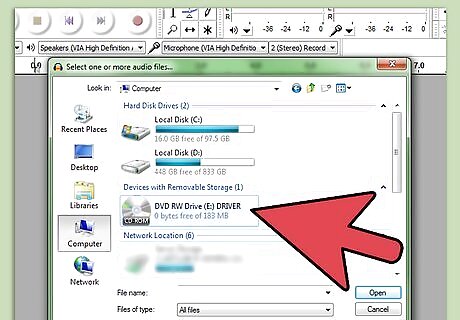
Rip audio from a CD onto a computer to reverse it. Today, by far the easiest way to listen to a song in reverse is to use a computer (as in the section above.) However, if the song you want to reverse is on a piece of physical media (that is, something you can hold like a CD, cassette, or record), you can still get it to play backwards with a little more work. For instance, if your song is on a CD, most modern computers will give you the option to "rip" the audio from your CD, making each track an audio file on your computer (see Listen to a CD Backwards. Once you've done this, you can use one of the methods above to easily reverse the song. There are many ways to rip the audio from a CD — perhaps the easiest involve using a program like iTunes to do the ripping automatically. It's worth mentioning that if you insert an audio CD into most modern computers, you'll automatically be presented with options for importing the files. Simply click one of these to get started.
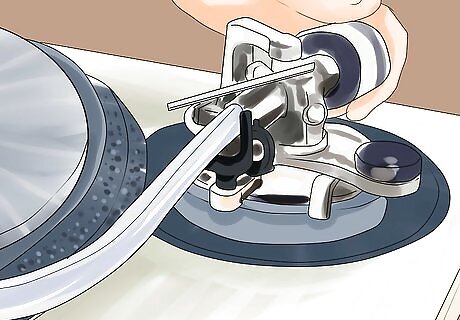
Modify a turntable for playing vinyl backwards. If you want to play a song backwards on a vinyl record, you'll need to make a few changes to your turntable so that you're able to play the record on its underside. Don't worry — none of these changes are permanent and, as long as you're careful, your turntable shouldn't be damaged in any way. Follow the steps below: Cut a styrofoam cup in half or grab a roll of duct tape. Place it in the center of your turntable around the spindle. Fix a soda straw to the spindle to extend it. Remove the headshell from the tone arm, then remove the cartridge. Re-attach the cartridge so that it points up away from the platter, then re-attach the headshell. Start the record and let the needle rise up into the groove. You may need to adjust the counterweight for this to work. This video serves as a good visual guide for how to modify your turntable.

Conversely, turn the record backwards with your hand. It's also possible to play songs backward on a vinyl record with nothing more than your own hands. Simply set the record player to 0 RPM, then carefully grab the edge of the record and turn it backwards (counter-clockwise) while the speakers are on. You should hear the audio of the song play in reverse. While this method is easy, it's very difficult to get the same sort of audio quality with this method that you ordinarily would — for instance, it's almost impossible to maintain a consistent speed for any length of time if you're just using your hands to turn the record.
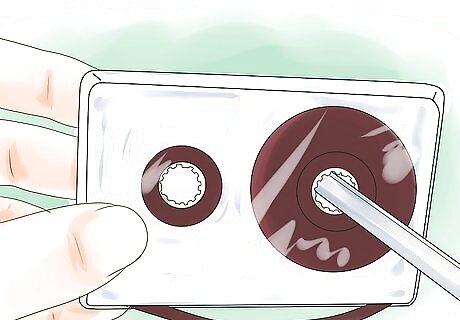
Re-wind an audio cassette to play it backwards. If the song you want to reverse is on an audio cassette, playing it backwards will involve taking the cassette apart, carefully reversing the internal tape, and re-assembling it. This method requires careful attention to detail to avoid damaging the tape — if you're worried about ruining your songs, you may want to practice a few times on blank cassettes before you try "for real." Use the steps below to guide you. Rewind the tape all the way. The full spool should be on your left after rewinding. Disassemble the plastic case. You will probably need a jeweler's screwdriver for this. Take note of the path the tape takes through the rollers — you will need to replicate it. Carefully take the tape spools out of the cassette. Do not flip them. Turn the spools around so that the full spool is on the right. Do this without flipping your spools over — you just want to move the spools while keeping them flat. If you flip the spools over, you'll just be playing side B when you reassemble the cassette. Mount the spools back in the cassette once again. Carefully thread the tape past all of the rollers so that it is exactly as you first found it. This is important — if the tape doesn't take the same path as before, it can be irreversibly damaged. Reassemble the cassette and rewind it so that the tape is spooled on the left. You can do this by hand if you're worried about damaging the tape. When you're ready, play the cassette as normal.

















Comments
0 comment